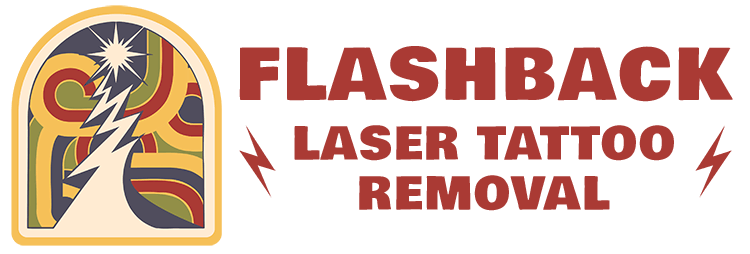FACTSHEET FOR LASER TATTOO REMOVAL
1. Placement of Tattoo pigment:
The tattoo pigment has been placed into the dermis, the layer of skin under the epidermis, where the large particles cannot be absorbed and are permanent.
2. How the laser works:
The Laser sends energy into the dermis and this energy is absorbed by the tattoo pigment which breaks up into tiny particles which can then be absorbed by the body.
3. Elimination:
The fragmented ink particles are eliminated through the body’s lymphatic system. In addition, some pigment may be lost through the surface of the skin via scabbing or blistering. If someone smokes more toxins are circulating in the lymphatic system and elimination of the pigment particles can take longer. A healthy person drinking lots of water and exercising eliminates ink particles faster.
4. Number of Sessions Required:
This depends on each individual and factors include: elimination rate, the tattoo location and pigment colour. Only the top layer of pigment can be treated at any one time somewhat like the skin of an onion.
The number of sessions required can vary greatly in number from 3 to 6 and up to 10+ may be required for difficult colours. It is not possible to accurately assess how many sessions will be needed for an individual tattoo.
5. Results:
Results can be complete tattoo removal or just fading of the tattoo. Some people only require the tattoo to be faded so that they can have a cover-up tattoo.
6. Pain:
Laser energy is very powerful and hits the ink pigment at nanosecond speed (one billionth of a second). The fragmenting of the pigment may hurt and is compared to the sting from a rubber band.
Depending on the size of the tattoo being treated, a removal session can be as little as five minutes or longer for larger tattoos and to decrease discomfort your technician may recommend the use of a skin numbing cream such as a topical anaesthetic.
7. Appointment Scheduling:
The time between appointments can vary for each individual as it depends on the body’s reaction to the laser and it is likely that your sessions will be scheduled for between 4 to 8 week intervals or as advised by your technician.
Your technician will book your next appointment.
8. Possible Side Effects:
Following your laser session, you may experience redness, swelling, scabbing, pinpoint bleeding and sometimes blistering or whitening of the tattoo pigment which returns to normal over time.
Please see the Informed Consent for Laser Tattoo Removal information sheet for complete details.
9. Aftercare Advice:
To avoid any complications please follow the aftercare advice on the Aftercare for Laser Tattoo Removal information sheet provided.
